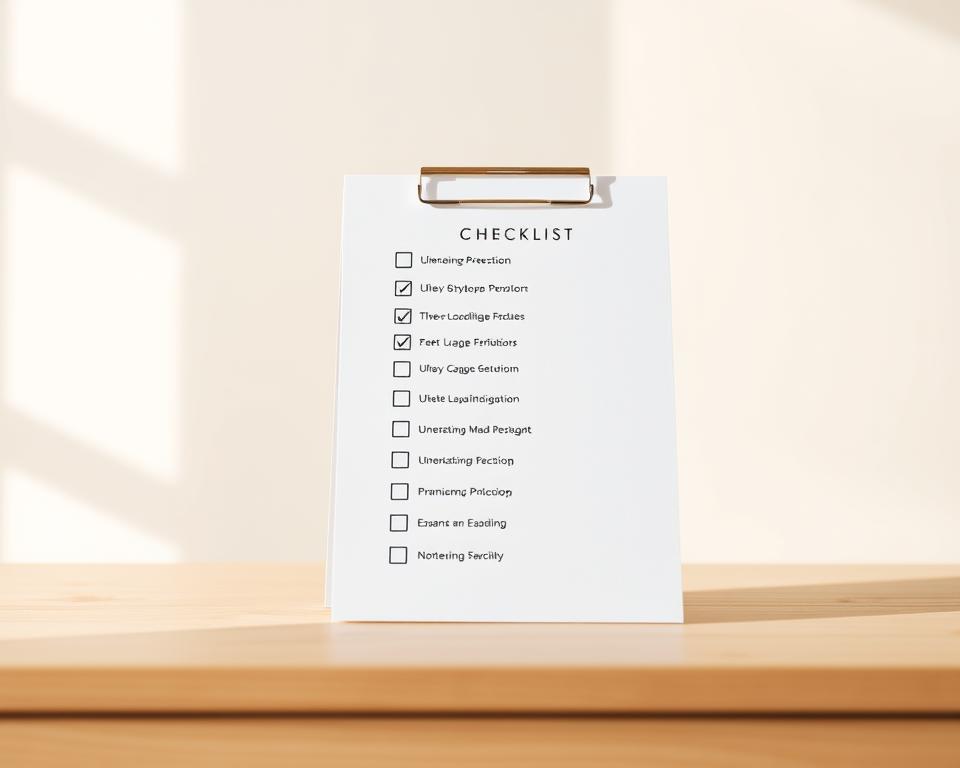Oglasi
Ready to cut through the noise and find the moves that actually matter? You’ll get a clear, practical guide to help you scan the most important shifts for the year without hype. This is guidance, not guarantees.
You’ll learn how customer experience, sustainability, generative AI strategy, hyperautomation, and resilience create real opportunities you can test now. The focus is on ethical, safe steps and on how to measure impact as you adapt.
Expect short plays you can pilot fast, plus notes on where to invest time and when to build long-term capability. Each section links to operational choices so you can decide which initiatives to start first.
This intro sets the stage so you can act at the right pace, protect downside risk, and turn insights into measurable results as the year unfolds.
Introduction: Why Business trends 2025 matter for your next move
Business trends 2025 matter because the coming year will tighten the margin for error, so you must prioritize what to test and scale.
Oglasi
Context and pace: Sustained disruption, tighter budgets, and shifting regulation set the conditions you’ll face. Many leaders expect continued upheaval, and organizations are moving from AI pilots to firm strategy while coping with new tariffs that affect sourcing.
What’s different this year: Generative AI is shifting from demos to platforms, regulators are more active, and consumers show more openness to AI-assisted shopping. Use these changes to focus on clear metrics, not shiny projects.
How to use this guide: Skim the H2s for priorities, then apply the checklists and examples to your operations. Run small experiments, track conversion, retention, cost-to-serve, and cycle time, and stop what does not work.
Oglasi
Keep customers central by pairing quantitative data with short qualitative feedback loops. Treat these insights as guidance, adapt to your market and resources, and use lightweight plans to reduce risk.
- Prioritize fewer bets; define clear metrics.
- Validate ideas with quick experiments.
- Track outcomes and iterate from real data.
For practical examples and best practices from successful companies, use this guide to pick tests that match your constraints and customer needs.
Getting strategic with generative AI
Start by treating generative AI as a platform, not a bolt-on experiment. Pick one high-value journey—product content, support triage, or internal decision support—and map inputs, outputs, and success metrics before you build.
From pilots to platforms: Embedding GenAI into models
Define clear workflows and metrics up front. Track response time, content cycle time, CSAT, and deflection rate. Decide build vs buy by comparing time-to-value and control over proprietary data.
Guardrails that scale: security, bias, and governance
Plan governance early: classify sensitivity, set role-based access, log prompts and outputs, and test for bias on real customer segments. Design safe failure modes with confidence thresholds and human review.
Real examples: content, support, decision support
- AI-assisted product description generation with human editing.
- Dynamic FAQs and support summaries that cut handling time.
- Decision support that synthesizes sales and inventory to recommend actions.
Start small and reversible. Run short experiments, quantify ROI, and expand only when outputs meet your quality and risk bar.
Hyperautomation and the intelligent enterprise
When systems share clean data, you can turn demand signals into smarter supply actions.
Start by mapping cross-functional use cases. Identify handoffs that cut costs and cycle time: automated lead-to-order, demand-sensing for procurement, and predictive maintenance paired with service scheduling.
Connect marketing, sales, R&D, production, and logistics so operations data flows where decisions happen. That reduces stockouts and overages and gives your teams one source of truth.
- Automate repetitive labor—order routing, invoice matching, shipment notices—and set clear escalation paths for exceptions that need human judgment.
- Measure before and after: pick-pack time, order accuracy, forecast error, and cost to serve per order to attribute real benefits.
- Align work design early: upskill staff, define new roles, and update SOPs and access controls to reflect changes in day-to-day work.
Reduce risk with phased rollouts and governance. Use change checklists, post-implementation reviews, and revisit supplier and 3PL integrations so data standards and SLAs line up across partners.
No guarantees—test in small pilots, measure results, and scale when outcomes meet your quality and security bar.
Customer experience is king
Great customer experience turns routine touchpoints into moments that drive loyalty and revenue.
Start by picking one lifecycle stage—onboarding, repeat purchase, or churn risk—and build a small playbook. Use explicit consent and limit data to what improves the interaction.
Hyper-personalization at scale: Turning data into relevant moments
Tailor offers, product suggestions, and service prompts using two clean signals: recent behavior and stated preferences. Test personalized email drafts and AI product recommendations in a narrow segment first.
Omnichannel maturity: Seamless transitions online, in-store, and social
Ensure carts, profiles, and support tickets follow your customers across web, store, and social so the journey feels continuous. Simple rules—shared cart IDs, ticket links, and profile sync—cut friction fast.
Measure what matters: CX metrics that link to revenue and retention
- Time to first value, conversion lift, and repeat rate
- NPS/CSAT and cost to serve per interaction
- Tie each metric to revenue and retention goals before you scale
Guardrails: give clear opt-outs, show why you collect data, and keep humans in the loop for sensitive cases. Pilot in one segment, measure lift, then expand personalization logic to more audiences.
Practical plays: creator-led tutorials to raise LTV, store pickup that closes online-to-offline gaps, and AI drafts that speed content without replacing service judgment.
Sustainable business and circular economies
Make sustainability a practical play: start with one product line and test circular designs that cut waste and cost.

Design for reuse by choosing durable materials, repairable parts, and modular components. These choices extend life and lower replacement costs.
Circular playbooks: Design, reuse, and reverse logistics in practice
Action steps:
- Design products for repair and disassembly to boost recovery rates and secondary sales.
- Build reverse logistics for returns, refurbishment, and resale; measure recovery and time-to-refurbish.
- Pilot small changes—packaging swaps, take-back programs, or EV delivery—and scale by measured outcomes.
Avoiding greenwashing: Claims, compliance, and credible proof points
Be clear and verifiable. Align claims with regulations and keep documentation that substantiates material, energy, and end-of-life statements.
Use lifecycle assessments or third-party certifications when they matter to buyers. Track costs and benefits—material savings, waste fees avoided, and potential premium pricing—then report progress transparently so consumers can compare performance and value.
Social commerce and creator-led growth
Short-form video and shoppable feeds now shorten the path from discovery to purchase. Use native storefronts, shoppable videos, and clear CTAs that match each platform’s norms. Keep creative native to the feed and respect the channel rhythm.
From feeds to checkouts: Converting on TikTok, Instagram, and beyond
Focus on formats that perform: short clips, live shopping, and interactive tutorials. Test one format at a time and measure lift with platform analytics and trackable links.
- Short-form demos: show product use in 15–30 seconds with a single CTA.
- Live drops: create urgency with limited bundles and real-time Q&A.
- Shoppable videos: enable checkout without leaving the app to cut friction.
Founders as creators: Building trust with behind-the-scenes content
When founders share product choices, testing and failures, you raise trust and engagement. Mix product-forward posts with educational narratives to reduce objections and boost perceived value.
Ethical note: disclose partnerships and follow brand safety guidelines. Align creator briefs to your audience, then give creators creative freedom and clear success metrics.
Measure incrementality: combine platform metrics, post-purchase surveys, and UTM links to verify how media drives sales and new customer interest. Ensure inventory and fulfillment can handle spikes, and standardize winning formats so you scale what works.
Pricing in an inflation-aware market
Smart pricing helps you protect margin while staying fair to customers. Inflation keeps many shoppers sensitive, so you must test offers that raise average order value without permanent cuts.
Start small and measure: 53% of shoppers say discounts drive loyalty and 41% name free shipping as a loyalty booster. Use those signals to design margin-safe tactics and track unit economics closely.
Smart discounting: bundles, thresholds, and loyalty
- Price architecture: use good/better/best tiers, bundles that lift AOV, and subscription incentives that reward commitment.
- Free shipping thresholds: tie them to profitable baskets and test impact on conversion, returns, and contribution margin.
- Targeted offers: shift from blanket discounts to lifecycle and segment-specific promotions aligned to demand and inventory.
- Perceived benefits: add speed, reliable service, and easy returns to boost value without cutting base price.
- Measure elasticity: run controlled tests and track unit economics, conversion, repeat purchase, and churn.
Use simple tools and technology to simulate scenarios and automate updates within guardrails. Keep messaging clear so consumers see total costs and benefits, reducing cart abandonment and support friction.
Supply chains, tariffs, and domestic sourcing in 2025
Rising import levies make proximity and supplier diversification practical risk-management. On April 2, 2025, the US set a baseline 10% tariff on imports and tightened de minimis rules for shipments from China. That changes how you price products and set reorder points.
Near you vs. nearshore: Lead times, quality control, and cost trade-offs
Compare domestic, nearshore, and offshore by total landed costs, lead times, defect rates, and resilience under changing regulations. Domestic sourcing often cuts lead time and shipping risks but can raise unit production costs.
- Model by SKU: pick products that need speed or tight quality control for local suppliers; keep commodity items offshore.
- Adjust operations: dual sourcing, safety stock for critical parts, and capacity agreements boost flexibility.
- Factor new tariffs: update cost structures, reorder points, and price assumptions to reflect duty and freight shifts.
Track the market for freight rates, port congestion, and currency swings. Communicate realistic delivery windows and transparent price changes to customers when conditions shift. No guarantees—run scenarios, diversify suppliers, and align your operations to match customer needs.
Resilience in the age of uncertainty
Build resilience by treating uncertainty as a routine input to planning, not an emergency. Make short, testable plays that your teams can run when signals shift. Keep changes humane and measurable so people can adapt without burnout.
Adaptive strategy: scenario planning, risk sensing, and dynamic supply
Run quarterly scenarios for demand swings, supply shocks, and regulatory shifts. Predefine triggers and playbooks so decisions are fast and consistent.
Improve risk sensing with leading indicators—supplier health, geopolitical alerts, and channel performance—on a simple dashboard. Use predictive tools to flag problems early, then test responses in small pilots.
Make supply dynamic: qualify alternate suppliers, pre-negotiate surge capacity, and set buffers for critical products. Audit single points of failure and prioritize fixes that materially lower risk.
The future of work: skills, AI augmentation, and humane transformation
Invest in people development: upskill for AI-augmented roles, redesign jobs to remove repetitive labor, and support humane transitions. Pair training with practical tools so new skills apply immediately.
- Define lightweight monthly reviews and deeper quarterly resets to keep strategy current.
- Equip teams with simple technology that improves recovery time without overengineering.
- Keep communication frequent and honest to reduce uncertainty across teams and stakeholders.
Measure continuously: track recovery time, staffing flexibility, and resource gaps. Use those metrics to adjust your strategy and protect both your people and your products.
Zaključak
Move with intention, not haste. End by picking two or three concrete moves you can test in the next 30 days, each with an owner and a simple metric.
Plan quarterly reviews to scale what works, sunset what doesn’t, and shift resources to the highest-impact practices. Watch tariffs, platform rules, and privacy changes so your playbooks stay compliant and customer-centric.
Focus on experience and value, not just price. Use data to validate decisions, share results, and let learning compound across teams. Invest in sustainability where it aligns with your model, and ask for legal, security, or transformation help when a move needs specialists.
No guarantees—these suggestions aim to help you adapt to shifting conditions, capture opportunities, and protect resources through the year.



